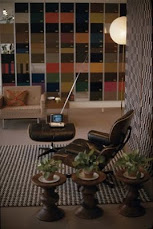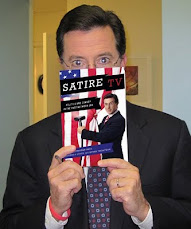Week 1, 8/26: Why TV?: An Introduction to the Course
Week 2, 8/31 & 9/2: TV History, Style, and Industry Structure
Readings: Mittell, Chapters 1 & 2; Watts, “Melancholy, Merit, and Merchandise”
Screenings: Texaco Star Theater, Tales from Tomorrow, Ernie Kovacs
Week 3, 9/7 & 9/9: New TV Structures
Readings: Caldwell, “Convergence Television”; Brooker, “Living on Dawson’s Creek”
Screening: Tosh.0, Justified
Week 4, 9/14 & 9/16: Public Interest and Television Citizenship
Readings: Mittell, Chapters 3 & 4
Screening: Good Night and Good Luck
Week 5, 9/21 & 9/23: Modes of Production
Readings: Mittell, Chapter 5
Screening: All in the Family, I Love Lucy, The Good Guys
PAPER 1 DUE 9/23
Week 6, 9/28 & 9/30: Modes of Production, cont. COMEDY & GENRE?
Readings: Thompson, “Comedy Verite?”
Screenings: Louie, Curb Your Enthusiasm
Week 7, 10/5 & 10/7: Narrative Structure
Readings: Mittell, Chapter 6
Screenings: Mad Men, Northern Exposure
10/7 MIDTERM
Week 8, 10/12 & 10/14 Narrative Structure, cont.
Readings: Johnson, “Watching TV Makes You Smarter,” Sconce, “What If?”
Screenings: Arrested Development, Freaks & Geeks
Week 9, 10/19 & 10/21: TV “Politics”
Readings: Mittell, Chapter 7; Newcomb & Hirsch, “Television as a Cultural Forum”
Screenings: Father Knows Best, Dragnet, Star Trek
Week 10, 10/26 & 10/28: Representing Identity
Readings: Mittell, Chapter 8; Santo, “Of Niggas and Citizens”; Dow, “Ellen, Television and the Politics of Gay and Lesbian Visibility”
Screenings: Boondocks, The Sarah Silverman Program
Week 11, 11/2 & 11/4: Representing Identity, cont.
Readings: Arthurs, “Sex and the City and Consumer Culture,” Kraszeweski, “Country Hicks and Urban Cliques”
Screenings: Mary Tyler Moore, Maude
Week 12, 11/9 & 11/11: Cult TV
Readings: Mittell, Chapter 9; Jenkins, “Star Trek Rerun, Reread, Rewritten”; Hills, “Defining Cult TV”
Screenings: Firefly, Slash Tapes
Week 13, 11/16 & 11/18: Children’s TV
Readings: Mittell, Chapter 10, Banet-Weiser, “Girls Rule! Gender, Feminism, and Nickelodeon”; McAllister and Giglio, “Commodity Flow of Children’s TV”
Screenings: Pee Wee’s Playhouse, iCarly
Paper #2 Due 11/18
Week 14, 11/23: TV Technologies
Mittell, Chapter 11
Screenings: Breaking Bad
Week 15: 11/30 & 12/2: TV & Taste
Readings: Thompson, “Good Demo, Bad Taste”; Rowe, “Roseanne: Unruly Woman as Domestic Goddess”
Screenings: Tim & Eric’s Awesome Show, Great Job!, Eastbound and Down
Week 16: 12/7 The End of Television (Criticism)
Parting thoughts, Review


























